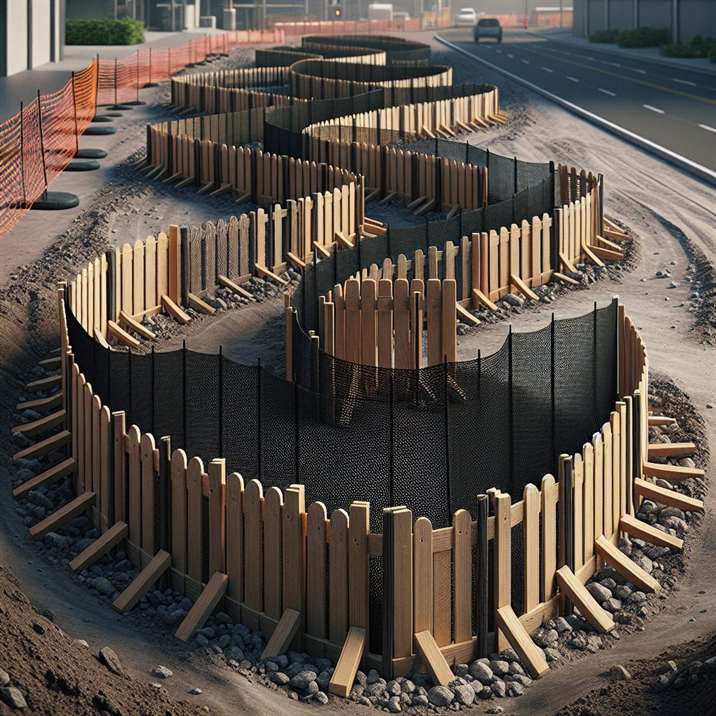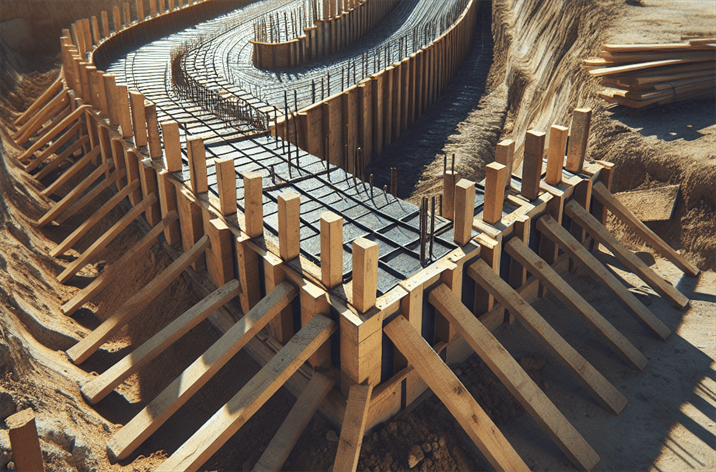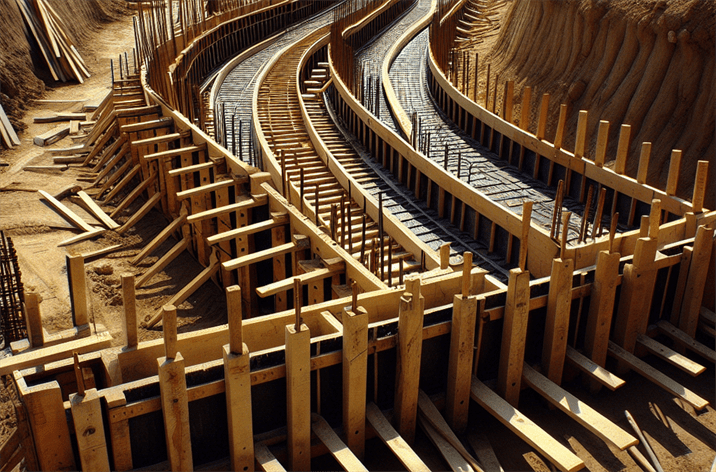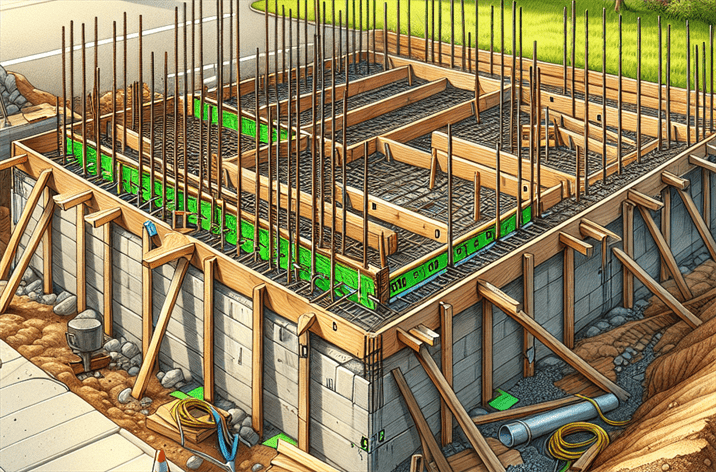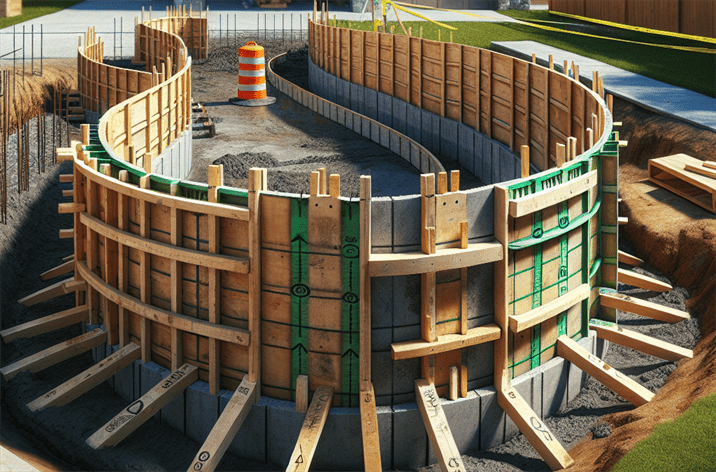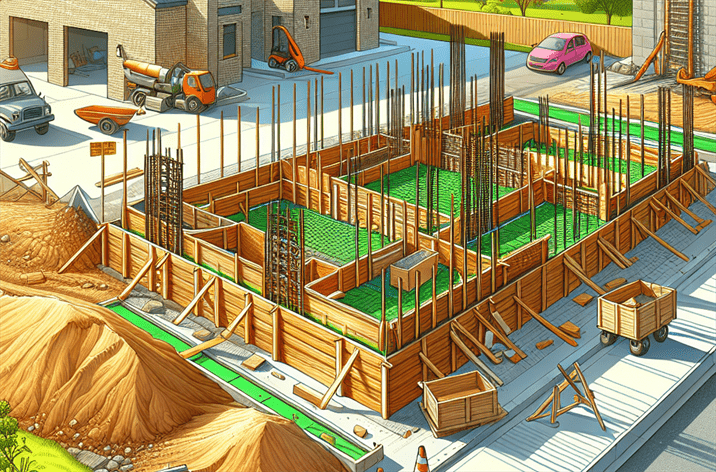Effective Construction Boundary Markers: Best Practices for Setup
Introduction
Have you ever wondered how construction sites maintain precision amidst the chaos? The answer lies in the often-overlooked yet critical component known as effective construction boundary markers. These markers are essential for ensuring that projects are executed with accuracy, safety, and efficiency. They define property lines, guide construction activities, and help mitigate disputes between neighboring properties.
In the fast-paced construction industry, the importance of effective construction boundary markers cannot be overstated. They not only delineate project boundaries but also serve as visual cues that aid in the organization of construction activities. As construction projects become more complex and regulations more stringent, the need for effective boundary markers has grown exponentially.
This article will explore the concept of effective construction boundary markers, their significance, historical context, and how they function. Additionally, we will delve into the best practices for setting them up, the available technologies, and real-world applications, ensuring you have a comprehensive understanding to optimize your construction projects.
For more insights into how construction boundary markers can enhance project efficiency, consider exploring our guide on best practices for using stakes and lath in construction.
What are Effective Construction Boundary Markers?
Definition
Effective construction boundary markers are tools or indicators used in construction to define the limits of a project site. They can take various forms, including wooden stakes, flags, fences, or painted lines, and they serve as a visual representation of where construction activities can occur. Their primary function is to ensure that workers and machinery operate within designated areas, preventing encroachments and ensuring compliance with local regulations.
Historical Context
The use of boundary markers has a long history that dates back to ancient civilizations. Initially, physical markers like stones or wooden posts were used to delineate property lines. As societies evolved, so did the methods of marking boundaries. The introduction of surveying techniques and tools in the 19th century revolutionized the construction industry, allowing for more accurate and systematic approaches to boundary marking.
The Importance of Effective Construction Boundary Markers
In recent years, the relevance of effective construction boundary markers has surged due to several factors:
- Increased Urban Development: As cities expand, construction projects are often closer to existing properties, raising the stakes for accurate boundary delineation.
- Legal Regulations: Stricter regulations require construction sites to adhere to defined boundaries to avoid legal disputes.
- Safety Concerns: Clearly marked boundaries help prevent accidents by keeping unauthorized personnel away from hazardous areas.
Effective Construction Boundary Markers in the Context of the Construction Industry
The construction industry relies heavily on effective construction boundary markers for various reasons:
- Project Accuracy: Markers help ensure that structures are built within specified lines, which is crucial for meeting design specifications.
- Resource Management: They aid in managing resources efficiently by outlining areas designated for specific activities, such as material storage or equipment parking.
- Communication: Clear boundary markers enhance communication among team members, ensuring everyone understands the limits of their work areas.
Key Players or Contributors
Several organizations and professionals contribute to the effective use of construction boundary markers. Surveyors, engineers, and project managers play vital roles in determining the appropriate types and placements of markers. Additionally, regulatory bodies often set guidelines that influence how boundaries should be marked in various jurisdictions.
For an in-depth look at the role of construction boundary markers, check out our article on boundary stakes and their role in defining property lines.
How Do Effective Construction Boundary Markers Work?
The Mechanics of Effective Construction Boundary Markers
Effective construction boundary markers work by providing clear visual indicators of where construction can take place. When properly installed, these markers help maintain the integrity of construction projects in the following ways:
- Visual Guidance: They serve as physical signs that guide workers and equipment operators, helping them adhere to predefined project limits.
- Measurement Reference: Many markers are used in conjunction with surveying equipment to ensure precise alignment and measurements.
- Boundary Alerts: In some cases, markers are equipped with reflective materials or lights to enhance visibility, especially in low-light conditions.
Technological Foundations of Effective Construction Boundary Markers
Modern construction projects often utilize technology to enhance the effectiveness of boundary markers. Some technological tools include:
- GPS Technology: Global Positioning Systems allow for precise placement of markers, improving accuracy in boundary delineation.
- Drones: Drones equipped with cameras can survey project sites from above, providing comprehensive views of boundary markers and ensuring they are correctly placed.
- Surveying Software: Advanced software applications help plan and visualize boundary layouts, allowing for better decision-making during project execution.
Real-World Applications of Effective Construction Boundary Markers
Effective boundary markers have a wide range of applications in real-world construction projects, including:
- Residential Construction: In residential areas, accurate boundary marking helps prevent disputes with neighbors regarding property lines.
- Commercial Projects: For commercial developments, boundary markers ensure compliance with zoning regulations and local laws.
- Infrastructure Development: Large-scale infrastructure projects, such as highways or bridges, require precise boundary marking to avoid encroachments and maintain safety.
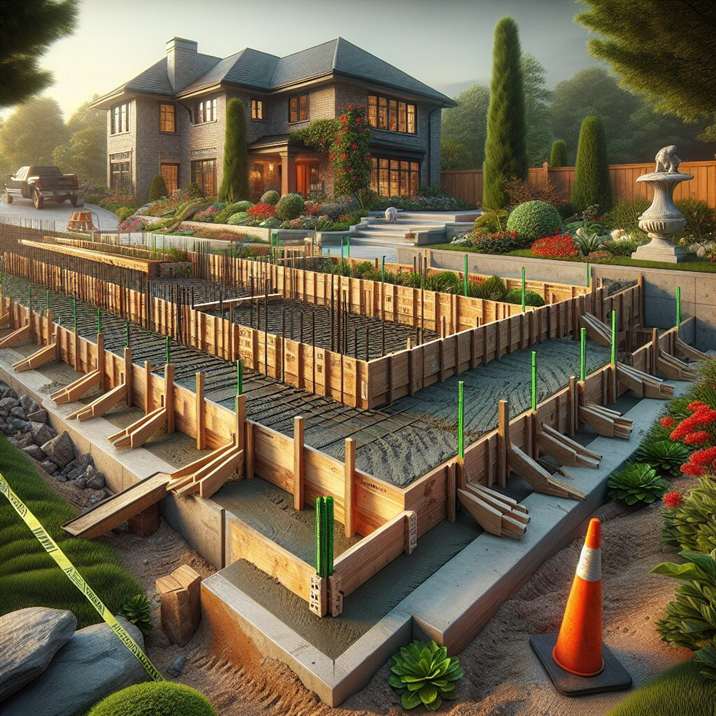
Best Practices for Setting Up Effective Construction Boundary Markers
Choosing the Right Materials
When it comes to effective construction boundary markers, the choice of materials is critical. Options include:
- Wooden Stakes: A popular choice due to their affordability and availability. They can be easily driven into the ground and painted for visibility. For a selection of quality wooden stakes, consider checking out our guide on affordable wooden stakes for construction use.
- Plastic or Metal Stakes: These materials are often used for their durability and resistance to the elements. They may be more expensive but can provide longevity in harsh conditions.
- Flags and Tape: Brightly colored flags or tape can be used in conjunction with stakes to enhance visibility, especially in busy construction environments.
Installation Techniques
Proper installation of boundary markers is essential for their effectiveness:
- Placement: Markers should be placed at regular intervals along the boundary to provide clear indicators. The spacing will depend on the project’s size and the material used.
- Height and Visibility: Ensure that markers are tall enough to be seen over obstacles and are painted in bright colors to enhance visibility.
- Regular Maintenance: Periodically check the markers to ensure they remain in place and are not damaged. This helps maintain project accuracy and safety.
Compliance with Local Regulations
Construction professionals must be aware of local regulations regarding boundary markers. Many jurisdictions have specific requirements for marker placement, materials, and visibility to ensure safety and compliance. Regular consultations with local authorities can help keep projects aligned with these regulations.
Training and Communication
Ensuring that all team members understand the purpose and importance of boundary markers is vital. Regular training sessions can help workers recognize and respect the boundaries established on-site, fostering a culture of safety and compliance. Moreover, clear communication regarding any changes to boundary markers or project plans should be emphasized to minimize misunderstandings.
Integrating Technology for Efficiency
Leveraging technology can significantly enhance the effectiveness of boundary markers. Consider using:
- Mobile Apps: Applications that allow team members to access boundary information on their smartphones can improve communication and awareness.
- Augmented Reality (AR): AR technology can overlay boundary information on real-world views, helping workers visualize boundaries more effectively.
Future Trends in Effective Construction Boundary Markers
As the construction industry evolves, so do the tools and techniques for effective boundary marking. Here are some trends to watch:
Sustainable Materials
With growing environmental concerns, the industry is seeing a shift toward sustainable materials for boundary markers. Biodegradable stakes and recycled materials are gaining popularity as eco-conscious alternatives.
Advanced Surveying Techniques
Technological advancements in surveying and mapping will continue to enhance the accuracy and efficiency of boundary markers. Techniques such as 3D modeling and laser scanning are becoming more common, allowing for precise boundary delineation.
Integration of Smart Technology
The future may see an increased integration of smart technology in construction markers. For example, markers equipped with sensors could provide real-time data on boundary integrity, alerting project managers to any discrepancies.
Emphasis on Safety
As safety regulations become more stringent, the need for clear and effective boundary markers will grow. Projects will increasingly focus on ensuring that boundary markers are not only effective but also comply with safety standards.
Conclusion
In conclusion, effective construction boundary markers are pivotal in maintaining accuracy, safety, and compliance on construction sites. As the industry continues to evolve, understanding the best practices for setting up and maintaining these markers will be crucial for project success. By choosing the right materials, employing proper installation techniques, and leveraging technology, construction professionals can optimize their boundary marking strategies.
For those looking to delve deeper into the world of construction boundary markers, staying informed about new technologies, materials, and best practices will be key. As you embark on your next construction project, remember that well-placed and maintained boundary markers can make all the difference in achieving your goals.
If you’re interested in enhancing the accuracy of your construction projects, explore our guide on construction layout stakes: step-by-step installation guide.
Resource Links:
1. Construction Dive – An overview of best practices for setting up boundary markers on construction sites.
2. NAIOP – Insights into the importance of effective boundary markers in development projects.
3. Earthworks – Guidance on selecting and installing construction boundary markers effectively.

